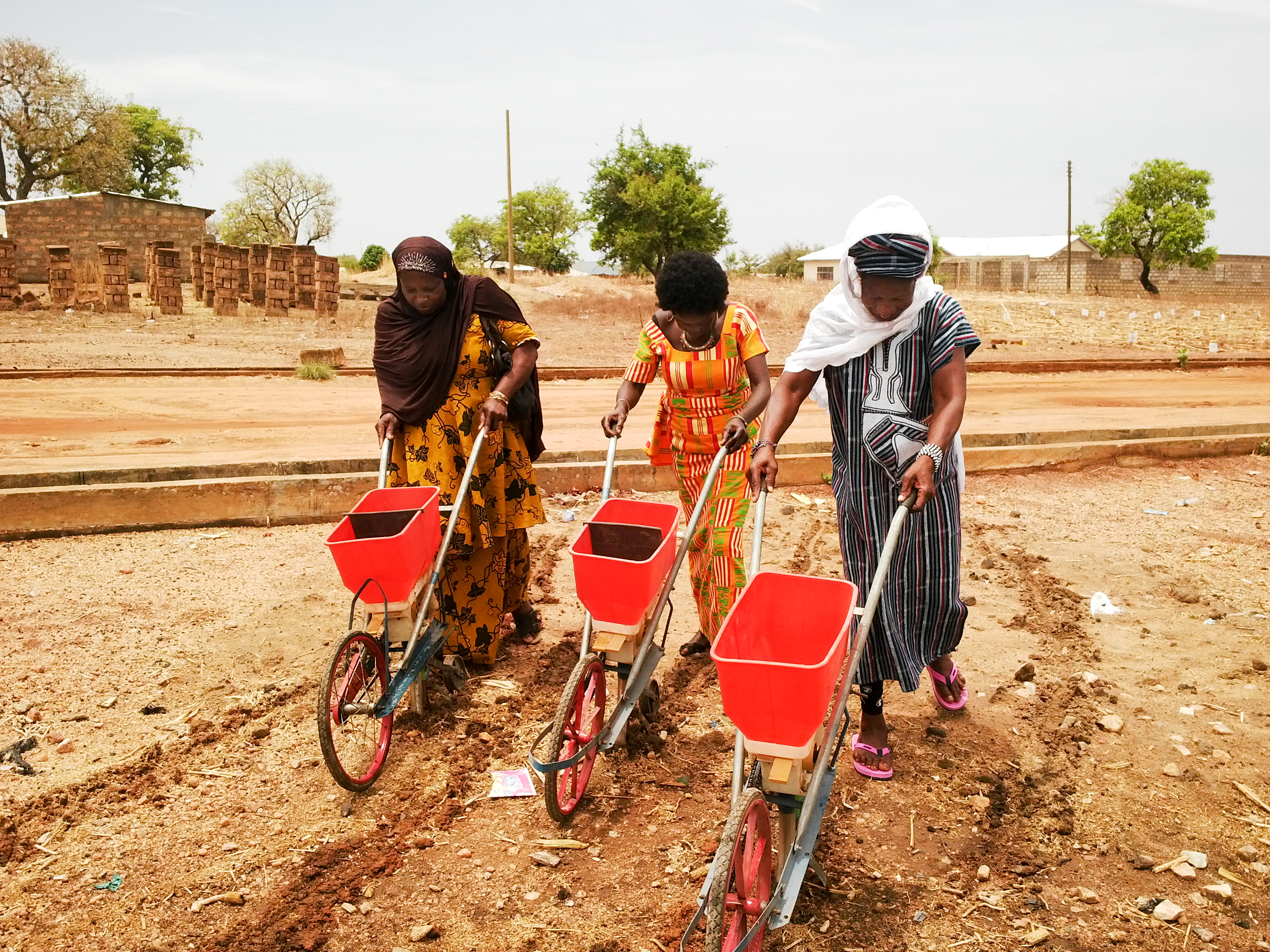
Working to Combat Aflatoxin in Kenya
Summary
Aflatoxin is a naturally occurring, highly toxic residue from strains of the aspergillus fungus found in the soil. Aflatoxin has many serious long-term health implications and is a significant concern in the maize and ground nut industries. The invisible toxin is linked to liver disease and cancer and is associated with immune-system suppression, growth retardation, and death in both humans and domestic animals. Maize in Kenya and many other parts of Africa is already contaminated when it is harvested, and the fungus continues to grow despite farmers’ attempts to dry their maize.
The AflaSTOP: Storage and Drying for Aflatoxin Prevention project identified the most promising storage options to impede the growth of aflatoxin and designing viable drying options that will allow smallholder farmers to dry their grain to safe storage levels. AflaSTOP worked to ensure that businesses operating in Africa are able to provide these devices to smallholder farmers. Linking scientifically rigorous research with human-centric design and grounded in marketplace realities, the project consisted of three core components: storage, drying, and commercialization:
- Storage: scientific testing of storage devices in controlled conditions and field testing with smallholder farmers
- Drying: research, design, testing, fabrication, and adaptation of potential drying solutions
- Commercialization strategy development: tailored investigation and validation of the commercial viability of each storage and drying product
AflaSTOP conducted the largest aflatoxin trial to date of small-scale agricultural grain storage devices (90kg-1,000kg). AflaSTOP’s research shows that until the underlying problem of maize being contaminated in the field is addressed, hermetic storage can be a major contribution to addressing the phenomenal increase in contamination experienced during the storage period due to current storage methods.
AflaSTOP supported the objectives of the Partnership for Aflatoxin Control in Africa (PACA), which is establishing a comprehensive, Africa-wide approach to aflatoxin control. Cofunding for this project was provided by the Bill & Melinda Gates Foundation and USAID, and the project is jointly implemented by ACDI/VOCA and Agribusiness Systems International (ASI), under the direction of Meridian Institute.
Objectives
- Develop and commercialize new technologies for post-harvest storage and drying of staple crops to help prevent and control the spread of aflatoxin
- Test the hypothesis that there is small-scale storage technology available in Kenya that can take relatively wet grain, store it wet, and prevent further contamination by aflatoxin
- In case the hypothesis is proven false, develop low-cost drying technologies that farmers will either invest in for personal use or pay a fee-for-service to use
Activities and Approaches
- Select and test the capacity of improved storage technologies in controlling aflatoxin in Kenya through “off-farm” testing in controlled environments (key findings from these activities are highlighted in AflaSTOP’s 2014 Annual Report)
- Conduct field trials with smallholder farmers who are using the most promising storage devices to store their recent maize harvest in order to understand the comparative performance of the device in the real world
- Conduct willingness to pay and storage behavior surveys to understand the perceived value of the devices and gain valuable insights into the preferences and market behaviors of smallholder farmers, which will aid the development of more effective commercialization strategies
- Develop and test up to three drying technologies using a human-centric design approach informed by assessments and private sector input
- Working with local businesses, develop commercialization models based on normal post-harvest concerns and identify ways to stimulate full commercialization and adoption, focused on rapid market development, including supply, awareness, and access to finance
- Further adapt the commercialization strategies to orient the device’s ability to address aflatoxin issues, in addition to insect infestation only
- Explore opportunities for scaling up the commercially viable post-harvest strategies to other African countries
- Capture and distribute lessons learned on the business case and models for smallholder storage and drying
Achieved Results
- Conducted a multitude of assessments on available technologies and practices related to storage and drying by farmers
- From off-farm testing of storage technologies, selected three that showed the most promise at arresting aflatoxin growth
- From the three designed drying technologies, developed a prototype of the portable shallow bed batch dryer, which was moved to the next phase and is currently under manufacturing testing by both formal and artisan (informal) manufacturers, to be market tested in late 2015 with a limited number of small-scale smallholder farmer service providers
- Research findings include the following:
- 75 percent of farmers had maize contaminated above 10 ppb in the areas in which AflaSTOP sourced maize; the set-up baseline level in one region was 500 ppb; in the other region, it was 1,900 ppb. These levels are incredibly high.
- Hermetic storage significantly reduces the increase of aflatoxin during storage, indicating that although using hermetic bags cannot eradicate post-harvest aflatoxin levels, they can prevent significant increases in the toxin and limit increasing household exposure
- Hermetic storage also eradicates insect infestation and thus stops insect-induced post-harvest losses, further moisture losses, and exposure to insecticide that farmers currently use to control insects
- To be able to use bulk hermetic devices effectively, grain must be below 13.5 percent moisture content, which is a difficult level to attain on farm and underlines the need for enhanced drying options
- Eradicating aflatoxin completely requires other methods, such as soil-based bio-control that are costly, not currently readily available to rural farmers, and will require widespread, contiguous use
- After being alarmed at the contamination rates gleaned from AflaSTOP’s maize sourcing activity, the Ministry of Agriculture in Meru adopted AflaSTOP’s aflatoxin awareness training materials, training an additional 6,000 farmers to date beyond the initial 3,200 farmers initially reached by AflaSTOP; the project plans to conduct capacity building in 2016.




